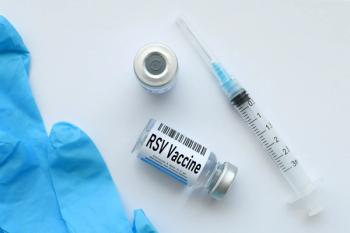
Results From ADVANCE-CIDP Trial Show IVIG 10% Effectively Treats CIDP Relapse
Key Takeaways
- IVIG 10% effectively treats relapses in CIDP, showing high responder rates and functional improvements in patients.
- Pharmacists are essential in managing IVIG therapy, ensuring proper dosing, monitoring adverse events, and counseling patients.
New trial results highlight intravenous immunoglobulin (IVIG) 10% as an effective rescue treatment for relapsing chronic inflammatory demyelinating polyradiculoneuropathy (CIDP), enhancing patient care and pharmacist involvement in management.
Findings from the ADVANCE-CIDP IVIG trial demonstrated that intravenous immunoglobulin (IVIG) 10% (Gammagard Liquid; Takeda) effectively treated relapses of chronic inflammatory demyelinating polyradiculoneuropathy (CIDP) in adult patients.1
CIDP is a progressive disabling neuropathy in which patients experience muscle weakness, distal sensory deficit, elevated spinal fluid protein, and slow nerve conduction velocity. First-line treatments typically consist of corticosteroids, plasmapheresis, or immunosuppressive drugs, but many patients eventually become resistant or discontinue due to adverse effects (AEs), which has led to research into the use of IVIG. IVIG is an immunomodulating agent that has been shown to be effective and safe in a range of immune-related neuromuscular conditions.2
The ADVANCE-CIDP IVIG trial evaluated the use of IVIG 10% as a rescue treatment for patients experiencing relapse during the ADVANCE-CIDP 1 trial, which was assessing the efficacy and safety of hyaluronidase-facilitated subcutaneous immunoglobulin (fSCIG) 10%. ADVANCE-CIDP IVIG was an open-label trial that enrolled adults with confirmed CIDP relapse, defined as a 1 point or greater increase in adjusted Inflammatory Neuropathy Cause and Treatment (INCAT) disability scores from pretreatment baseline.1
Participants experiencing relapse received an induction IVIG 10% dose (2 g/kg), followed by maintenance infusions at the same monthly equivalent dose of prerandomization IVIG, 3 per week for 6 months. The primary outcome was the responder rate, and other outcomes included the responder rate across all patients relapsing on fSCIG 10% or placebo in ADVANCE-CIDP 1, time to functional improvement, and change in adjusted INCAT scores and Rasch-built Overall Disability Scale (R-ODS) centile scores from pre-IVIG 10% baseline.1
In total, 20 patients received IVIG 10%, including 4 in the fSCIG 10% relapse group and 16 in the placebo-relapse group. The responder rate was 100% (95% CI; 80.6%-100%) in the placebo relapse group and 95% (95% CI; 76.4%-99.1%) in the overall relapse group. Across all patients, the median time to functional improvement was 25 days. At the time of treatment cessation, mean changes in adjusted INCAT and R-ODS centile scores from pre-IVIG 10% baseline were –1.9 and 12.9, respectively.1
In total, 60 AEs were reported in 14 patients (70%), with event rates of 0.15 per infusion and 3 per patient. Eleven patients experienced treatment-related AEs (55%), with 2 patients (10%) experiencing a severe event (a headache in 1 patient and pain in the body and joints in another patient). The most frequently reported AEs (> 5%) were headache (40%) and pyrexia (10%). In total, 389 infusions were administered, of which less than 1% had the infusion rate reduced or the infusion stopped due to intolerability.1
Pharmacists’ Role
Pharmacists stand at a crucial intersection of medication management and patient care, making the findings from the ADVANCE-CIDP IVIG trial particularly noteworthy. The demonstrated efficacy of IVIG 10% as a rescue treatment for relapsing CIDP in adults offers pharmacists valuable insights into managing this complex neurological condition. Understanding the treatment protocol, including the induction dose and maintenance schedule, empowers pharmacists to ensure appropriate dosing, monitor for potential adverse events, and counsel patients effectively on what to expect during their IVIG therapy. This knowledge contributes directly to optimizing patient outcomes and enhancing adherence to the prescribed treatment regimen.
Furthermore, the trial’s focus on patients experiencing relapse despite previous treatment, including with fSCIG 10%, underscores the evolving landscape of CIDP management. Pharmacists need to be aware of the potential for breakthrough relapses and the role of IVIG as a rescue option. This awareness facilitates proactive communication with prescribers regarding treatment adjustments and allows for comprehensive medication reconciliation, especially for patients transitioning between different immunoglobulin formulations. By staying informed about the efficacy and safety profile of IVIG in this context, pharmacists can play a vital role in ensuring seamless and effective care for individuals with relapsing CIDP.
Ultimately, these new data reinforce the pharmacist’s responsibility in staying abreast of the latest clinical trial outcomes impacting patient care. The ADVANCE-CIDP IVIG trial provides evidence-based insights into a critical treatment strategy for a challenging neurological disorder. By integrating this information into their knowledge base, pharmacists can contribute significantly to the multidisciplinary care team, optimize medication therapy, and ultimately improve the quality of life for patients with relapsing CIDP.
REFERENCES
1. Pasnoor M, Anderson-Smits C, Levine T, et al. The results of ADVANCE-CIDP IVIG trial: intravenous immunoglobulin 10% therapy with GAMMAGARD LIQUID/Kiovig for treatment of relapse in chronic inflammatory demyelinating polyradiculoneuropathy. Eur J Neurol. 2025;32(4):e70110. doi:10.1111/ene.70110
2. Intravenous immunoglobulin (IVIg) for the treatment of chronic inflammatory demyelinating polyneuropathy (CIDP). National Institute of Neurological Disorders and Stroke. Updated July 25, 2022. Accessed May 1, 2025. https://www.ninds.nih.gov/health-information/clinical-trials/intravenous-immunoglobulin-ivig-treatment-chronic-inflammatory-demyelinating-polyneuropathy-cidp
Newsletter
Stay informed on drug updates, treatment guidelines, and pharmacy practice trends—subscribe to Pharmacy Times for weekly clinical insights.











































































































































































































